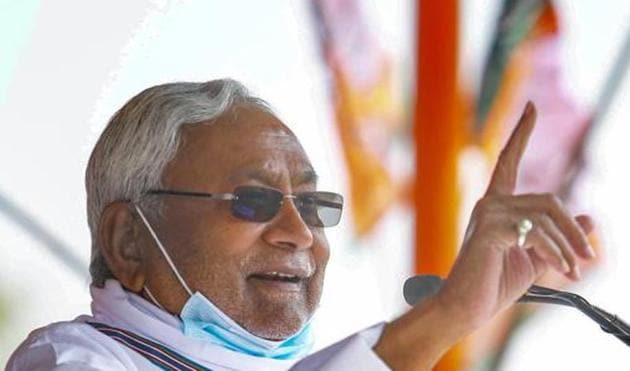From 2005 to 2020: Rise and fall of Nitish Kumar’s JD(U) in state elections
NDA got a landslide majority in 2010 Bihar Assembly elections after a remarkable five-year rule which also helped Nitish Kumar earn the title of ‘Sushasan Babu’.
Nitish Kumar is set to take oath as the chief minister of Bihar for a record seventh time even after his party, Janata Dal (United), slipped to the third position in the latest Assembly election results. Kumar took oath as Bihar chief minister for the first time in 2000, but the journey was short-lived. He resigned within days since the National Democratic Alliance (NDA) didn’t have the numbers to prove majority in a 324-member house.

Later in 2005, Kumar took oath as Bihar’s CM for the second time after JD(U) won 88 seats out of 139 contested and its ally, the Bharatiya Janata Party (BJP), won 55 out of 102 seats contested, sailing through the majority mark of 122 in a curtailed 243-member house due to the formation of Jharkhand. He successfully completed his five-year term and went into the 2010 assembly elections unscathed.
Click here for full coverage of Bihar Assembly Election 2020
NDA got a landslide majority in 2010 Assembly elections after a remarkable five-year rule which also helped Kumar earn the title of ‘Sushasan Babu’. The ruling alliance won a whopping 206 Assembly seats in a 243-member strong house. JD(U) clinched 115 seats out of 141 contested, while BJP grabbed 91 out of 102 seats contested. The massive mandate and the highest number of assembly seats won by the JD(U) till date provided Nitish Kumar to complete another five-year term without any difficulty, but the 2014 Lok Sabha elections made all the difference.
Nitish Kumar walked out of NDA and ended a 17-year-old alliance with the BJP in 2013 after Narendra Modi was appointed as the Chairman of BJP’s Lok Sabha election campaign committee. Since then, the change has been sinusoidal in Bihar’s political scenario. After 2014 general election results were announced, Kumar resigned as Chief Minister, taking the “moral responsibility” for the defeat as JD(U) got only two Lok Sabha seats out of 40.
Jitan Ram Manjhi, a close confidant of Nitish Kumar and the then SC/ST welfare minister in Bihar government, was elected as the next chief minister, but that too didn’t last long. Manjhi came under severe public criticism for some of his statements and ran out of political favour after he started challenging the authority of Kumar within the party.
Kumar was re-elected as the leader of legislature party and Manjhi was removed from the party, stating indiscipline and collaborating with the BJP after he recommended the dissolution of Bihar assembly at a cabinet meeting. The 2015 Bihar assembly elections brought another paradigm shift in Bihar politics as Kumar formed ‘Mahagathbandhan’ (Grand Alliance) with the Rashtriya Janata Dal (RJD) and Congress.
Mahagathbandhan restricted the NDA to mere 58 seats out of 243, but Kumar’s JD(U) was pushed to the second position as RJD emerged as the single largest party. JD(U) and RJD contested at 101 seats each and the latter won an impressive 80 seats in the 2015 Bihar Assembly elections. JD(U) grabbed 71 seats but Kumar remained the leader of the Grand Alliance and took oath as CM for the fifth time.
But the ever-changing dynamics of Bihar took another turn with Kumar breaking out of the Mahagathbandhan. Kumar supported the decisions like demonetization and GST, and resigned as Chief Minister stating corruption charges against the then Deputy Chief Minister Tejashwi Yadav, and formed the government again with the BJP.
In 2020 elections, NDA decided to include smaller regional parties like Hindustani Awam Morcha (Secular) and Vikassheel Insaan Party (VIP), as Kumar faced a massive anti-incumbency of 15 years. According to the final results released by the Election Commission of India, NDA has crossed the magic figure of 122-mark to form the government, out of which JD(U) has won 43 seats and BJP won 74 seats. HAM(S) and VIP shared 4 seats each, helping the tally to reach 125.






